*FYI - this post may contain affiliate links, which means we earn a commission at no extra cost to you if you purchase from them. Also, as an Amazon Associate I earn from qualifying purchases. Check out our Privacy Policy and Disclosure. for more info.
Perched upon the aptly named Castle Rock, Edinburgh Castle is the most visited attraction in Scotland, welcoming over 1.3 million visitors each year who come in search of views, royal history, and a glimpse at the ‘Honours of Scotland’ – Britain’s oldest crown jewels.
But I’ll be honest – visiting Edinburgh Castle does require some prep work. The first time I visited, I felt underwhelmed because I didn’t know my way around, there were way too many people, and I had zero historical understanding of the sights I was seeing.
… which is a pretty sad way to spend almost £20 for entry!
But don’t worry – I gave Edinburgh Castle another try on my recent month-long stint in Edinburgh, and I’m now the biggest of fans. Turns out, there’s a lot to do at this pricey attraction if you know how to plan for it, which is what I’ll be chatting about today.
So, this post, I’ll be sharing a step by step guide on how to visit Edinburgh Castle like a pro, along with an itinerary to help you plan your visit and make the most of that entrance fee. I hope you find it helpful!
How Long to Spend at Edinburgh Castle
Many articles I read before my visit suggested that Edinburgh Castle is doable in about two hours.
… which I now realize is so untrue it hurts!
With several museums, a large war memorial, a royal palace, a Great Hall & several other little stops/activities, if you want to actually see all of Edinburgh Castle’s sights and attractions, you’ll need much more than two hours… especially considering the line to see the Honours of Scotland (AKA the Crown Jewels) can last 20+ minutes.
In my experience, a more accurate estimate would be 3+ hours if you want to see everything, more if you want to take a more relaxed pace and maybe enjoy some food/drink while you’re there.
Overall, if you’re a history nerd and want to make the most of the castle and its many component museums/attractions, then plan for 3.5 hours minimum.
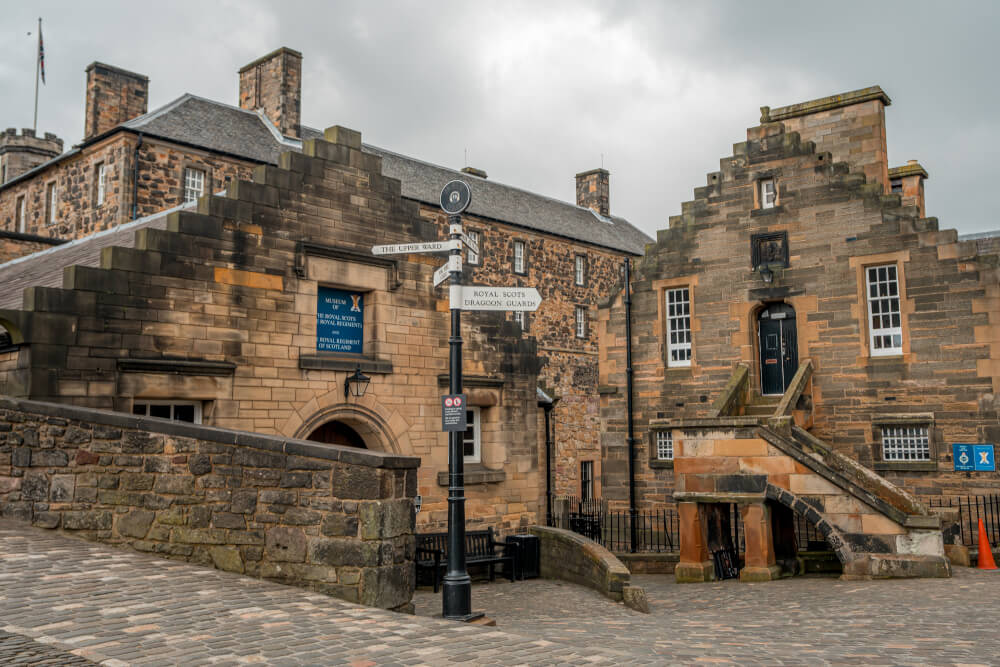
A Brief History of Edinburgh Castle
Alright, before we dive into Edinburgh Castle logistics and planning, let’s first discuss a bit of history.
Given the age of the castle, much of what you see in-person requires some imagination to bring to life, so having an idea of the castle’s history before your visit can be pivotal in your enjoyment.
… Plus, there’s not a ton of detailed explanations on site (and the audio guides cost extra), so listen up…
Given its clearly strategic position, it should come as no surprise that Castle Rock has been occupied for thousands of years, with evidence dating back all the way to the Iron Age.
The “castle” bit however only has official records dating back to the 11th century, though it was likely a modest timber structure at the time, of which nothing remains.
The oldest surviving structure at the castle (and the oldest in the city) dates back to the 12th century. It is of course St Margaret’s Chapel, built by King David I in honour of his mother. This same king is the one credited with turning Edinburgh Castle into a royal residence.
As the years rolled on, royals came and went, with new additions being made to the castle, creating the complex we see today.
The Renaissance of the 1400s for instance brought us the Royal Palace that now houses various royal paintings and displays (including THE closet where Mary, Queen of Scots gave birth to King James VI of Scotland, AKA King James I of England).
The 1500s brought us the Great Hall, which was needed of course for fancy banquets.
The 1600s brought new defences and barracks as the castle eased into its role of a military outpost more than swanky royal digs (since Holyrood was now a comfier option).
… And here we are, centuries later, still exploring all those same places that have somehow withstood the trials of time. Do you see what I mean now that history is so important in “getting” Edinburgh Castle?
It’s worth noting of course that this condensed history offers just a tiny glimpse of the dramas that have unfolded at this castle over the years. After all, Edinburgh Castle is known as the most besieged place in Britain with a (recorded) 26 sieges.
So yes, if you’re into drama and turbulence, this is definitely a place to visit.
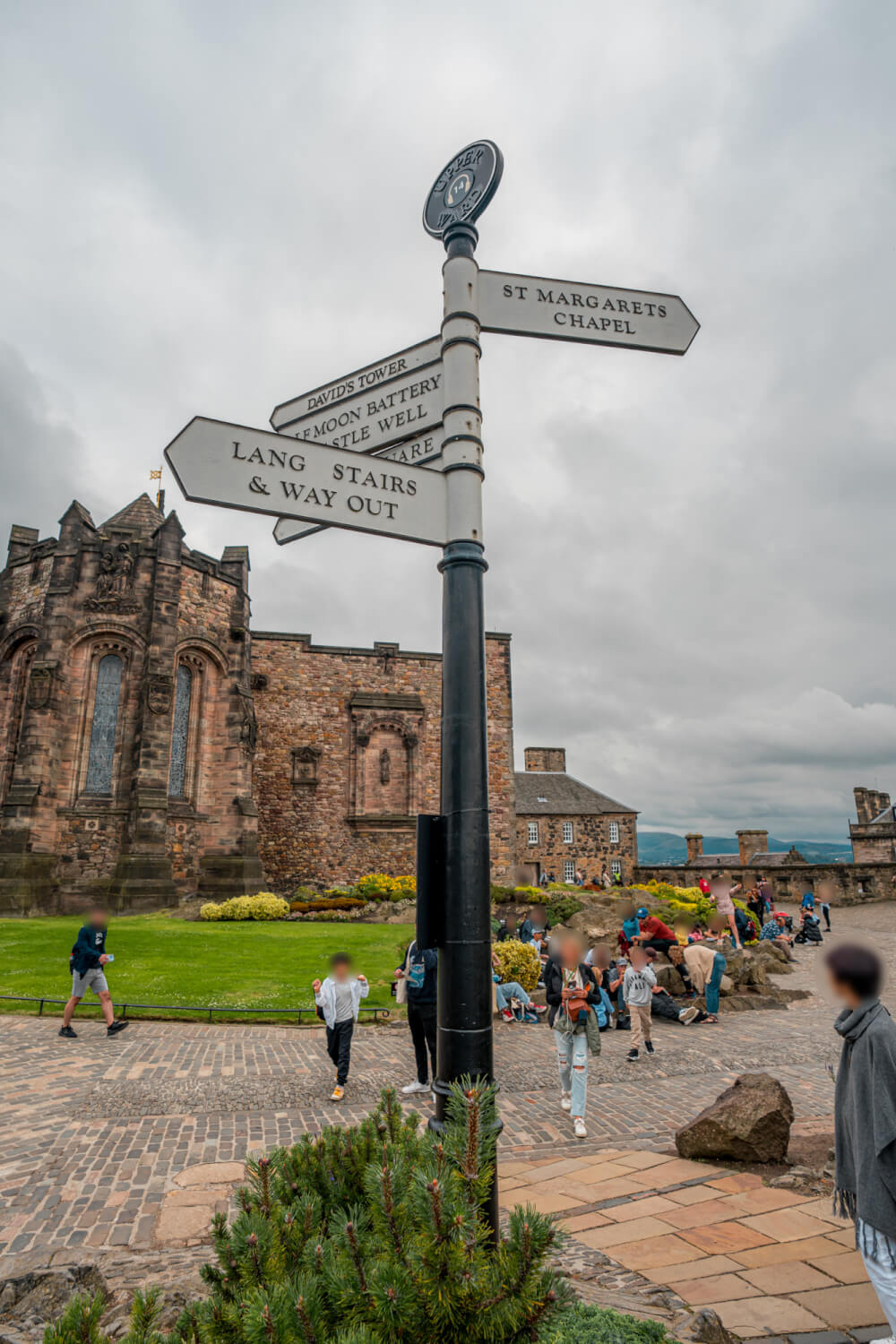
The Best Way to Tour Edinburgh Castle
Alright, with that quick bit of history out of the way, now let’s discuss the best way to visit Edinburgh Castle.
First – get there early in the morning and be the first one there.
We thought we would avoid crowds by booking a late afternoon slot just before the castle closed but it was still swarming with visitors upon arrival, and many of the museums closed far before the actual castle closing time of 6pm, so we missed many of the key attractions.
Yes, I’m very bitter about it and so urge you to not make the same mistake (though to be fair, we did go in late July which is close to peak season).
Anyways, broadly speaking, if you’re looking for the smartest and most efficient way to visit Edinburgh Castle, I’d say make this your first activity of the day and arrive just before opening time so you can be among the many to storm the gates. This will be more fun if you imagine it’s in a “medieval sacking” kind of way rather than a “I paid £20 to be here” kind of way.
Then, I’d recommend starting at the top of the castle then working your way down, starting with the big must-sees like the Honours of Scotland and the Stone of Destiny, then meandering downwards to appreciate the views, and ending your time at the many museums.
NOTE: I’d highly recommend looking up a map in advance (overkill, I know) but when you’re admitted into the castle you’re pretty much left to your own devices, so having a rough idea of the layout can help a lot.
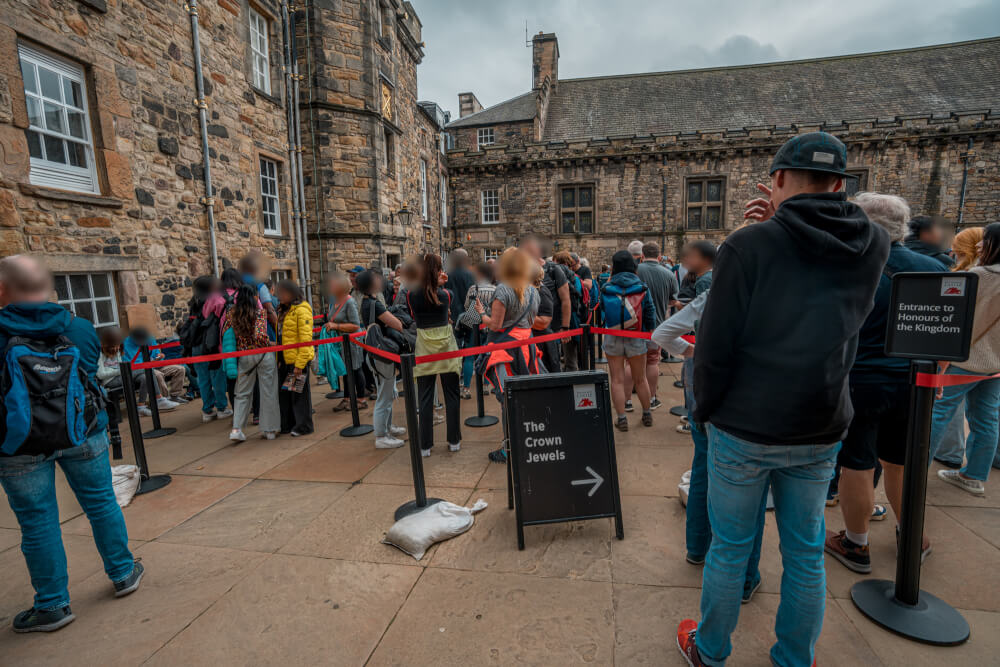
Anyways, now that we’ve covered the basics of our tactical plan, let’s move onto the step by step one day itinerary for Edinburgh Castle:
Edinburgh Castle Itinerary: Step by Step!
Looking for the best way to tackle Edinburgh Castle in one day? Here are my suggestions, along with loose time stamps where they matter.
9:15isham (or before) Join the Edinburgh Castle Line-Up
Yes, if you want to make the most of a crowdless Edinburgh Castle, then you need to arrive even before the castle opens.
So, head out to join your touristy brethren along the Royal Mile and marvel at how many others were THIS keen to see a castle first thing in the morning.
9:30am: Storm the Castle
When it’s time to let everyone in, make your way up the Castle Esplanade and get those tickets scanned!
Afterwards, make your way over through the entry gate (and the iconic 19th century Gatehouse). You’ll be walking uphill from this point onwards, so get ready to power walk.
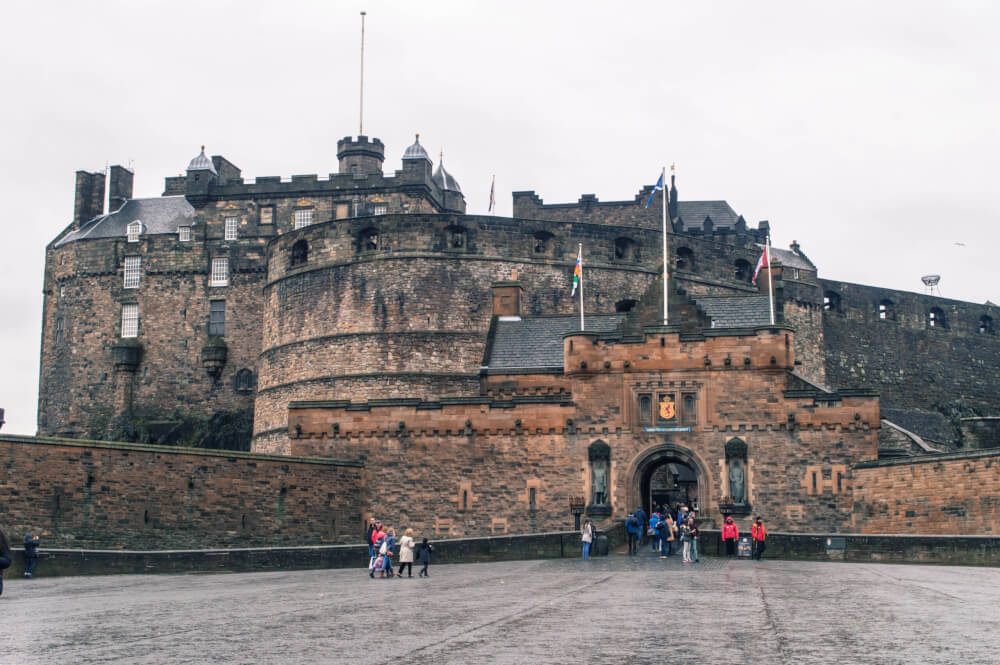
If you want a map, you can get one at the Information desk right when you enter.
You can also grab an audio guide from the nearby desk for an extra fee.
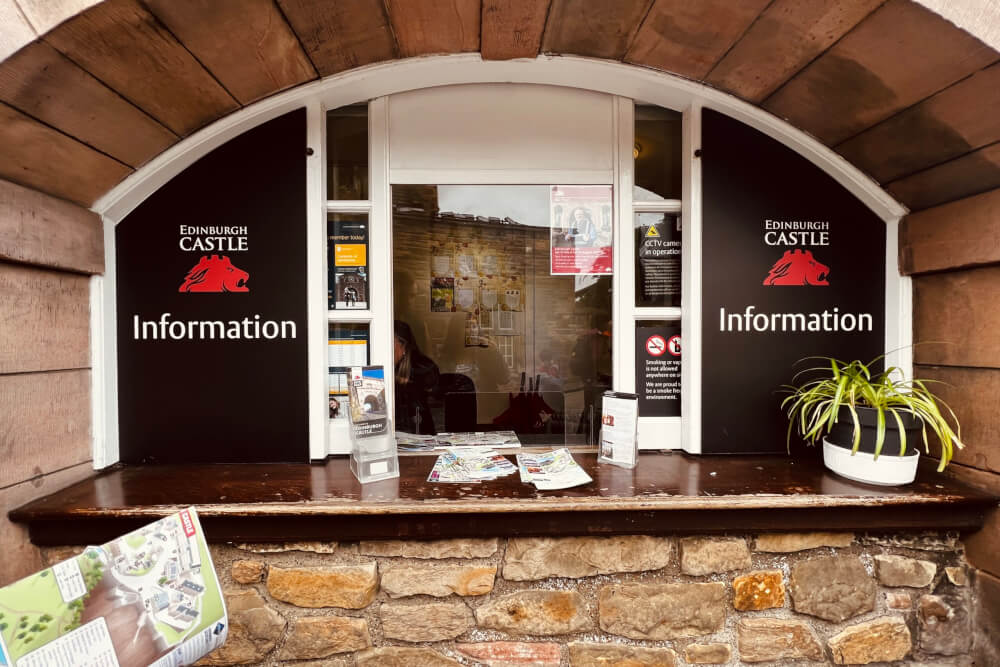
Now, remember: the biggest attraction at the castle with the longest queue is the Honours of Scotland (AKA the Crown Jewels) so make a bee line for it.
It’s also the highest point of the castle so you get all your uphill stomping out of the way.
There will be many a tempting distraction along the way in the form of viewpoints and cool-looking cannons. DO NOT GIVE IN! We will come back for those later. For now, you want to be first at the crown jewels.
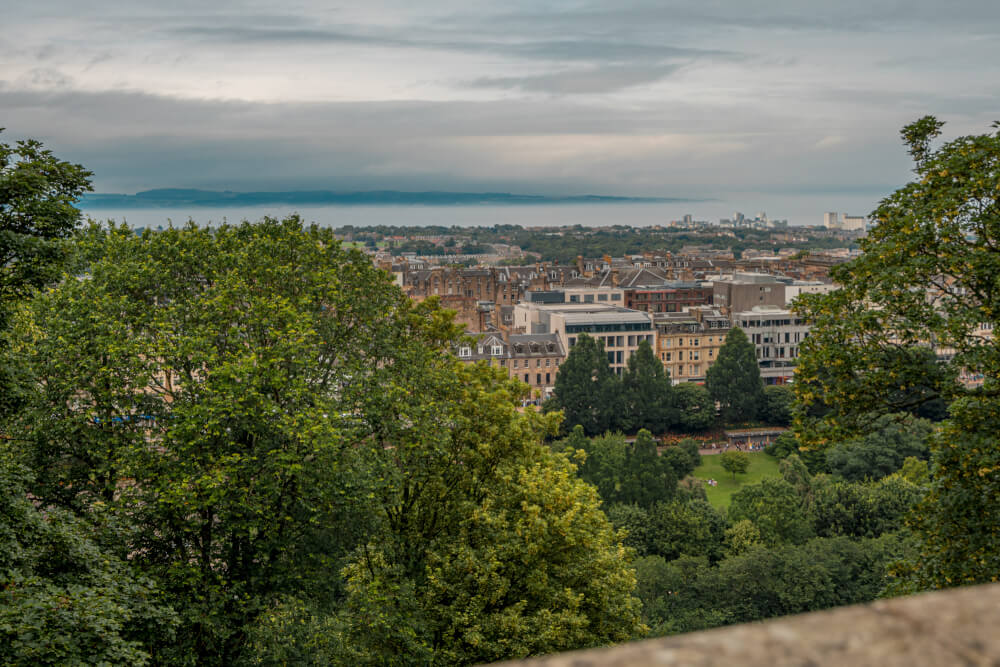
9:35ish: Portcullis Gate / Argyle Tower
Continue your uphill walk through the Argyle Tower and its Portcullis Gate, built 400+ years ago after a particularly bad siege known as the Lang Siege.
This will be a “gawk and walk” kind of moment because we’re on a mission today with this Edinburgh Castle itinerary, but above head, you’ll see some alarmingly sharp spikes in the raised portcullis (the gridded gate).
Marvel at how lucky you are to not be impaled by that thing, then carry on.
NOTE: Above this gate is Argyle Tower, but we’ll get to that later.
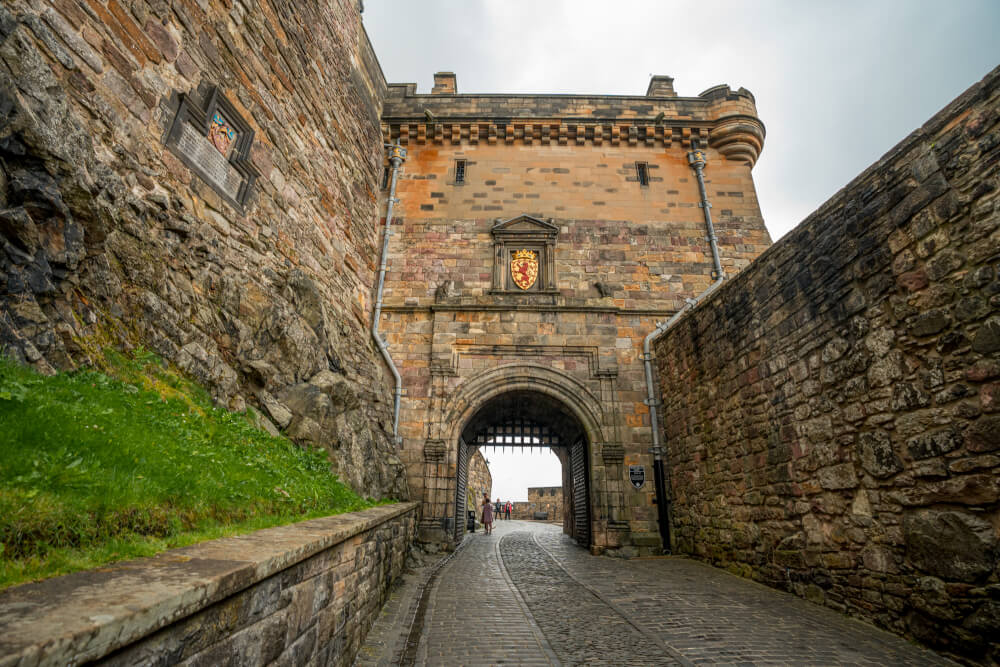
When you arrive at the Argyle Battery, stay strong.
You’ll be tempted to flock to the glorious view over the city like the rest of your fellow visitors, but instead you’re going to take a hard left and climb up…
The Lang Stairs
Totalling 70 steps, the Lang Stairs offer the most efficient (and calf-shaping) way to reach the top of Castle Rock, AKA where you’ll find Edinburgh Castle’s top royal attractions.
Climb up these steps and proceed to Crown Square, where the castle’s top attractions await.
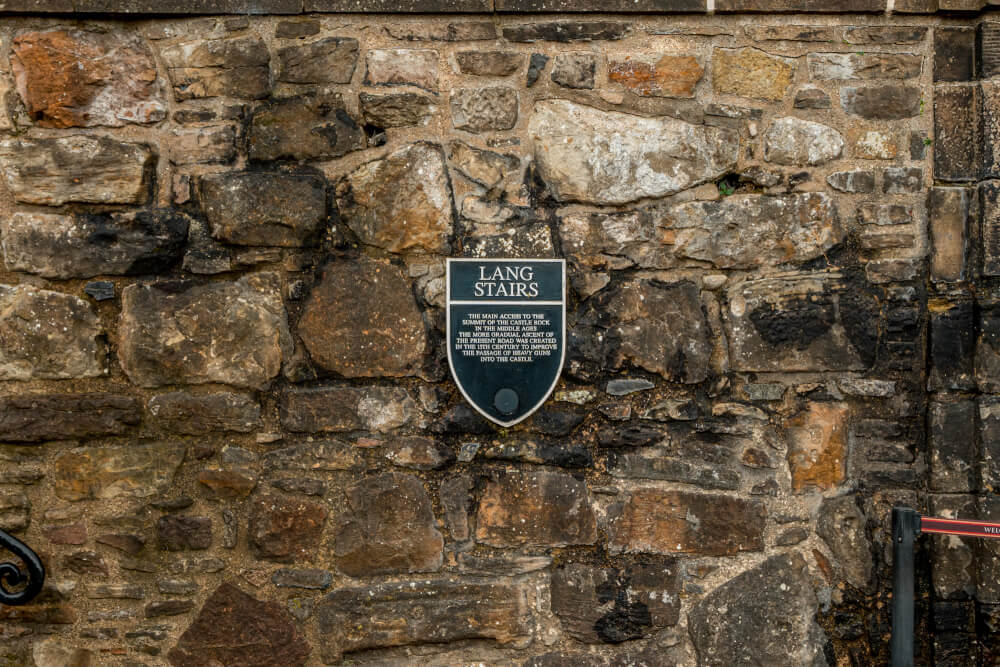
9:40am: The Honours of Scotland (and Stone of Destiny)
When you arrive in Crown Square via the Lang Stairs, you’ll have the Scottish National War Memorial to your right. Directly opposite the entrance to this memorial, you should see some queue markers for the Honours of Scotland. Join this queue as soon as you can!
If all goes according to plan, you’ll either have a short wait, or no wait at all.
While going through the queue, there are some (spoilery) pictures that show you what exactly you’ll be seeing inside, but I think more important than photos is understanding the history/significance behind the room’s treasures, especially since the written explanations inside don’t really go into much detail.

So, why is seeing the Honours of Scotland SO cool?
Well, these are the oldest crown jewels in Britain which were even used in the coronation of Mary, Queen of Scots 500+ years ago.
Next to this historic ‘crown, sceptre and sword’ set is the cooly named ‘Stone of Destiny’, which historically played a key role in the coronation of Scottish Kings for centuries and centuries…
… until it was stolen by the English. Who took it and slotted it into their Coronation Chair at Westminster Abbey until 1996, when it was returned to Scotland for good.
Of course, that’s not entirely true. This is one of my favourite Edinburgh fun facts – the stone did make a brief return to Scotland in the 1950s… when a group of Scottish students stole it back from Westminster Abbey during a Christmas Day heist.
But anyways, now you know – those shiny things in the cabinet are very significant indeed. Bask in their sparkliness and make your way down the stairs.
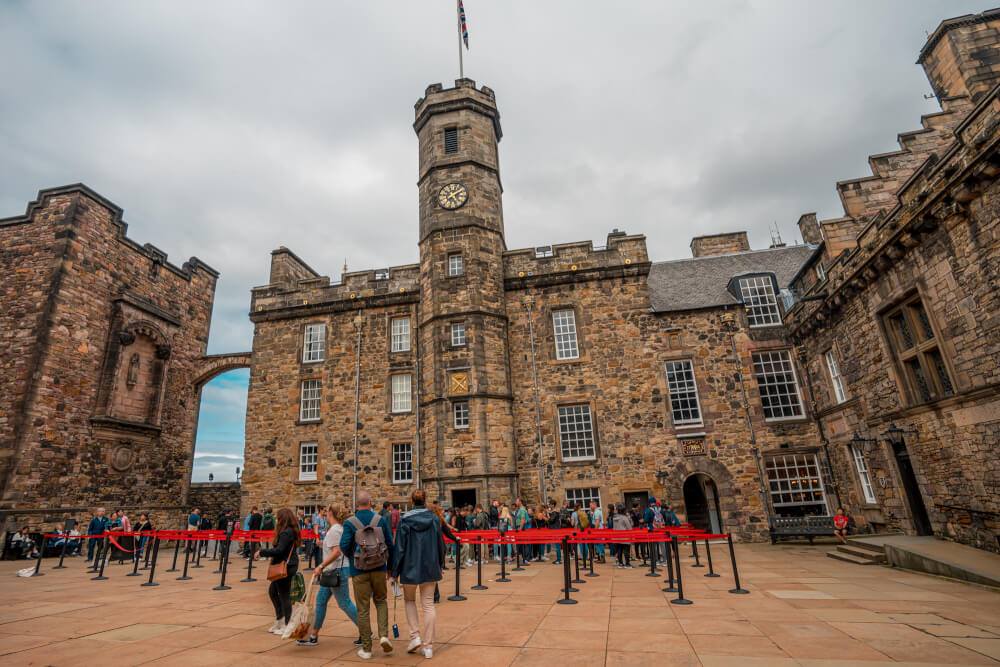
The Royal Apartments
As you exit the Honours of Scotland room, you’ll be led into the Royal Apartments.
This part of the palace has now been re-done with a series of room showcasing royal portraits and artifacts. As you enter the first room with portraits, take note of a doorway in the top right hand corner.
This is the very room where Mary, Queen of Scots gave birth to King James VI of Scotland (AKA King James I of England)!
Though it wasn’t 100% open during my visit, I’ve been told you can normally enter the room to take a look. Instead, I had to meekly steal glances from behind a rope
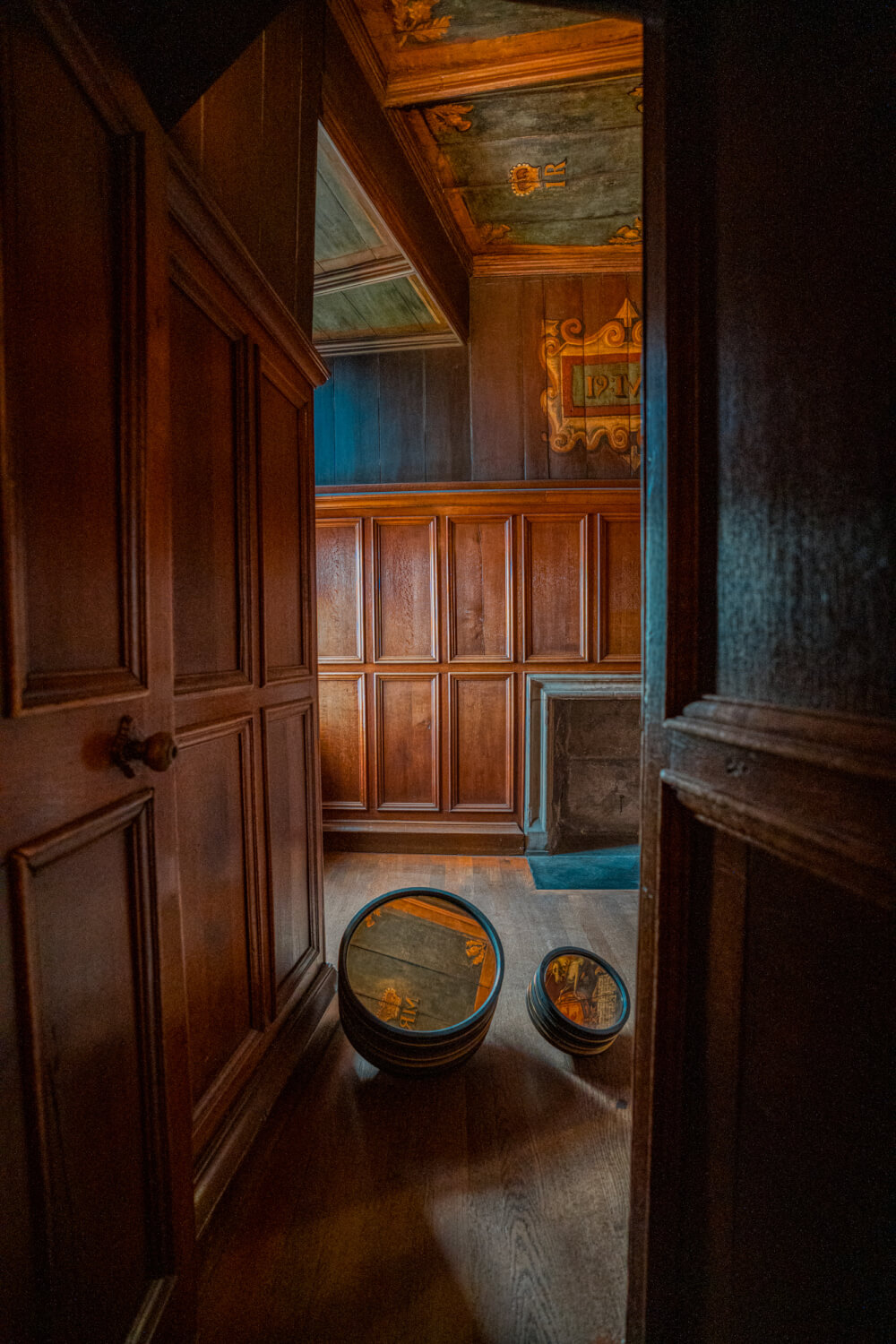
As you move through the palace, another highlight is the beautifully restored Laich Hall, still used today for fancy state occasions.
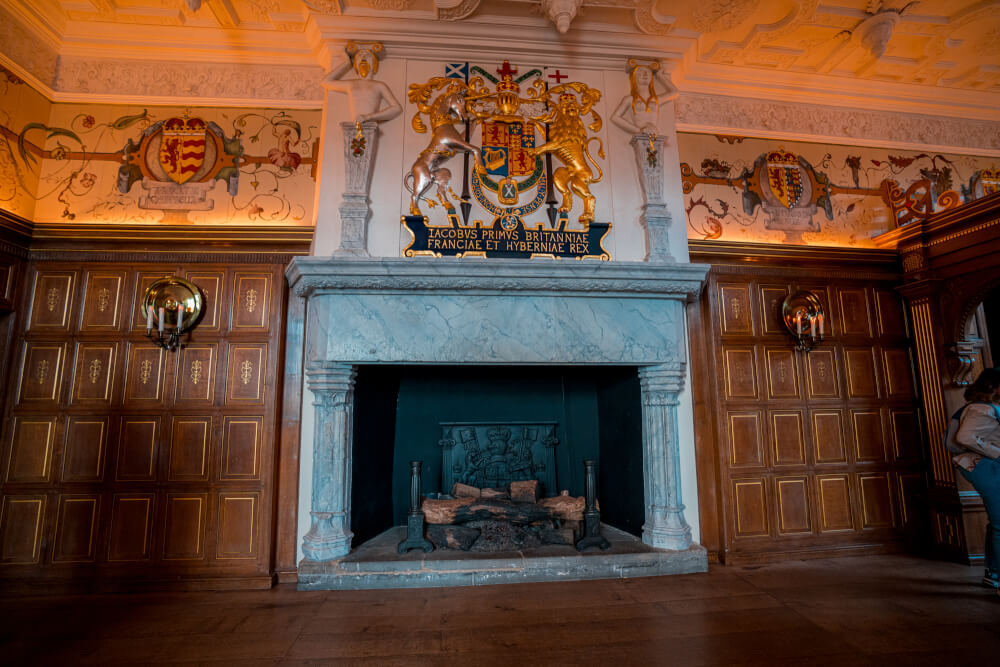
The Great Hall
After leaving the Royal Apartments, your next stop should be the Great Hall, also located in Crown Square.
Originally completed in 1511, a highlight of this room is the beautiful woodwork, including the beam-tiful roof.
While originally intended for state occasions and banquets, the room served as barracks from the mid 17th century onwards, turning the once grand room for fancy parties into a smelly and unsanitary frat house. You have Oliver Cromwell to thank for that – his capture of the castle in 1650 marked the start of the castle’s military makeover.
Luckily, the Great Hall today has once again been restored to its former glory for regular folks like you and me to visit and ogle at our leisure.
There’s plenty of interesting objects on display in this room, so be sure to give everything a proper look. Keep an eye out especially to the right of the fireplace for the Laird’s Lug, supposedly used by the king to spy on those below.

Scottish National War Memorial
Alright, now it’s time to transition from the royal side of Edinburgh Castle to the WAR side. Yeah! Cannons!
… But before we get to the giant guns and things, we’ll start with a somber memorial.
The final attraction of Crown Square is the Scottish National War Memorial, built in 1927 by a team of 200+ Scottish artists and craftsmen, with architect Sir Robert Lorimer at the helm.
No photos are allowed inside, so I’ll try to describe it the best I can: imagine a church-like interior with imposing barrel-vaulted ceilings, tall stained glass windows, and light stone walls adorned with monuments commemorating individual regiments.
In front of the monuments, there are red leather-bound books containing the Rolls of Honour, thousands of names belonging to the brave Scots who died in service to their country.
It’s truly a sight to behold, and well worth a lingering visit. If you’re curious, you can see some photos through a virtual tour here.
The memorials here feel especially poignant when you consider that the Great Hall just opposite served as a hospital room for soldiers during the Great War, as it did after Oliver Cromwell took over in 1650 and turned the once prestigious hall into troop accommodation.
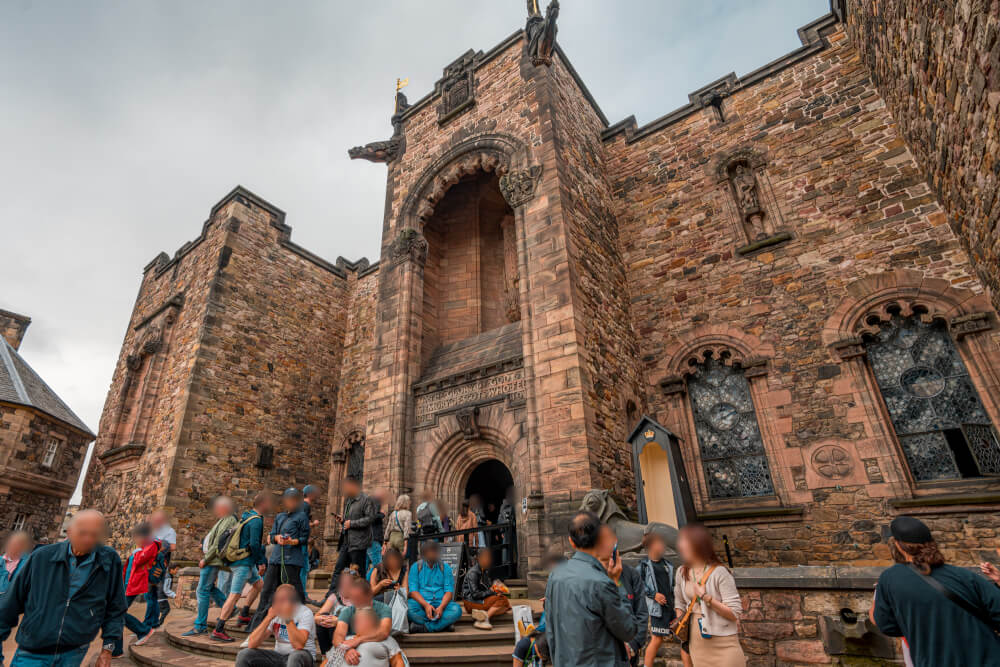
David’s Tower & Half Moon Battery
With all the hard hitting must-sees out of the way, it’s time to exit Crown Square and move onto that gorgeous panoramic view you had to skip earlier.
The views from this perch are absolutely breathtaking, so get your fill of photos while you can… because after you start making your way down, you probably won’t want to climb all the way back up.

One sight to take note of below is the Edinburgh Castle Dog Cemetery, which is home to about two dozen tiny headstones that (if you’re easily moved like me) might make you feel a little teary.
Honouring regimental mascots and dogs of high-ranking officers alike, this small cemetery may boast the best view of any in Edinburgh – a fitting final resting place for the best friends and dogs.
NOTE: You won’t be able to enter the cemetery, but you can let your tears fall over it from above.

Apart from the weirdly moving pet tribute space, there are a number of other interesting sights on this level, for instance…
- Argyle Tower and Fight for Castle Exhibition
- Fore Well
And….
St Margaret’s Chapel
This simple, unassuming structure is supposedly the oldest building in Edinburgh and was (according to the official castle website) a chapel built in the 1100s by King David I for mother, Queen Margaret (canonized in 1250, hence the ‘saint’ bit).
For centuries, this historic chapel was used as mere storage facility for gunpowder. It wasn’t until the mid 19th century that its origins were rediscovered and today it’s one of Edinburgh Castle’s signature attractions.
… people even still use it for weddings and christenings!
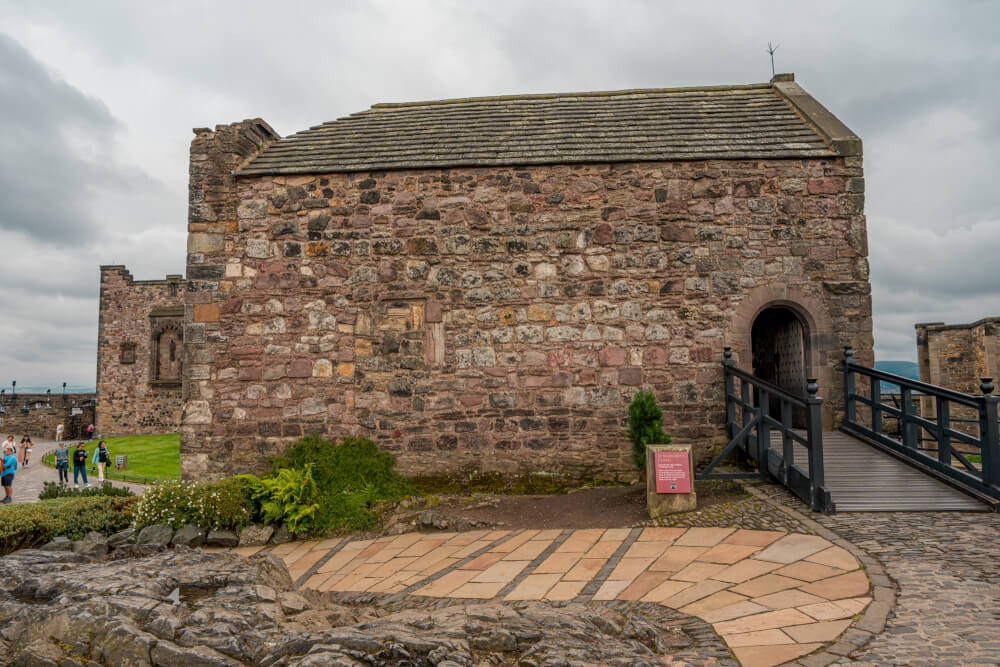
Just outside of the chapel, you’ll find another one of the signature attractions of Edinburgh Castle: Mons Meg!
Mons Meg
She may not look too high tech, but back in her day, Mons Meg was considered a cutting edge piece of gear.
… and she’s looking pretty great for something that’s almost 600 years old!
Given to King James II in 1457, this impressive gun could once upon a time fire a gunstone weighing 150kg for up two miles. In her almost 100 years of service, she was used in sieges aplenty, and today serves her most important role yet, as backdrop to silly tourist selfies.
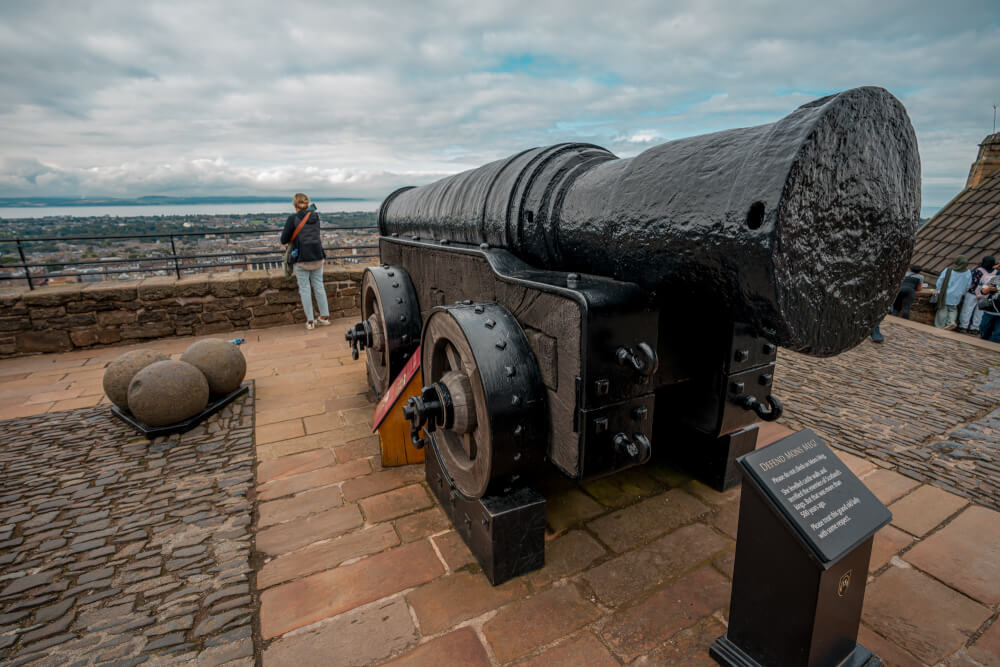
Now, when you’ve had enough of the views (which may take a while), it’s time to make your way down via…
Foog’s Gate
Once known as “foggy gate”, the true name origins of this 17th century gate are unknown… although given the castle’s location in Scotland, I’d guess fog might have something to do with it.
Anyways, walk through this pretty and mysterious gate, then proceed down towards the Prisons of War Exhibition, which should be on your left.
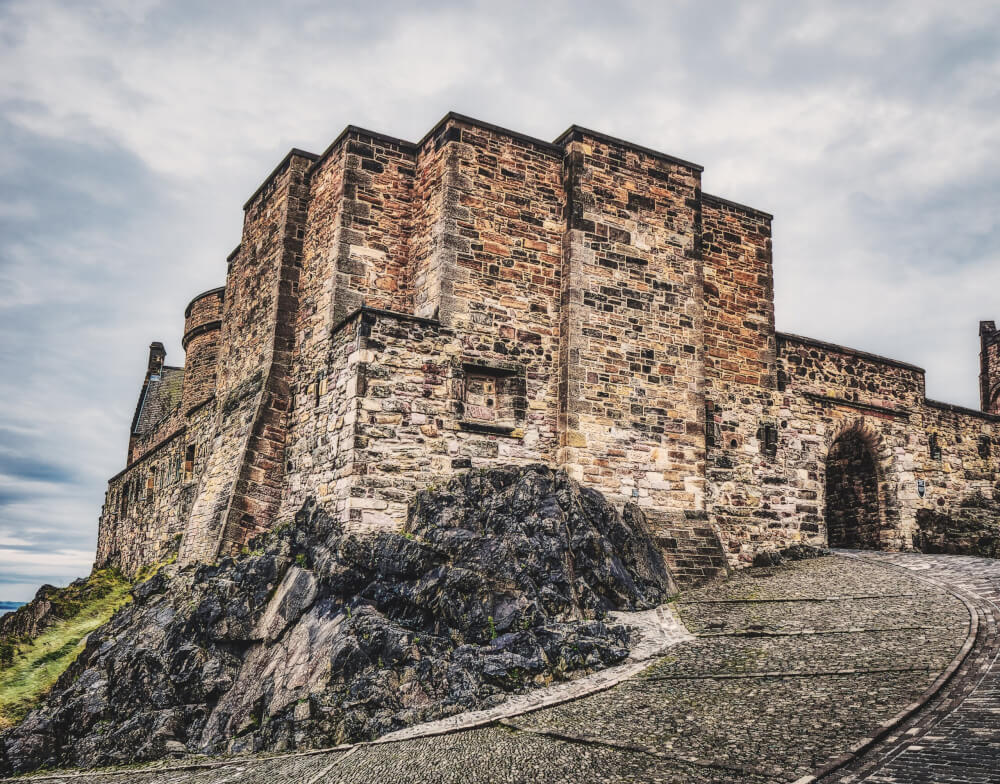
Prisons of War Exhibition
Once upon a time, the vaults below Crown Square were used as a dark and sad holding space for prisoners of war.
… These days, the space has been converted into a fun exhibition all about prisoners of war, which is much better than actually holding them.
I was really surprised by how much I enjoyed this portion of Edinburgh Castle. Not only are there recreations of the former prison quarters, but there are lots of cool objects on display from this chapter of the castle’s history as well.
An especially cool highlight is a centuries-old etching of an American flag, thought to be left by an American prisoner of war:
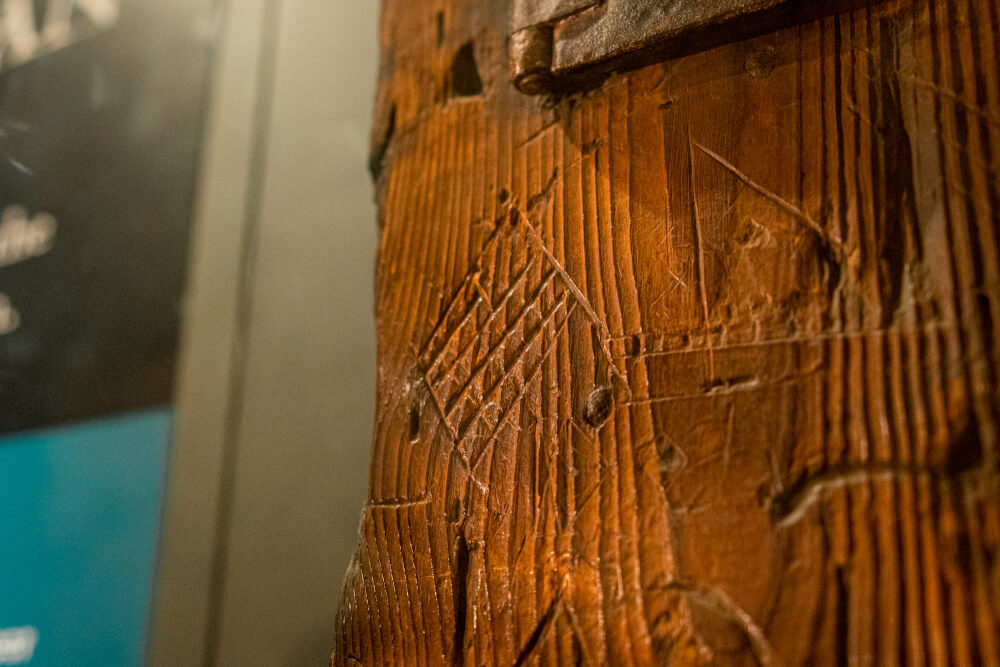
I also really enjoyed reading about the craftiness of various Edinburgh Castle prisoners over the years, from tales of detailed banknote forgery to the creation of elaborate crafts for sale using leftover bones and materials from the prison.
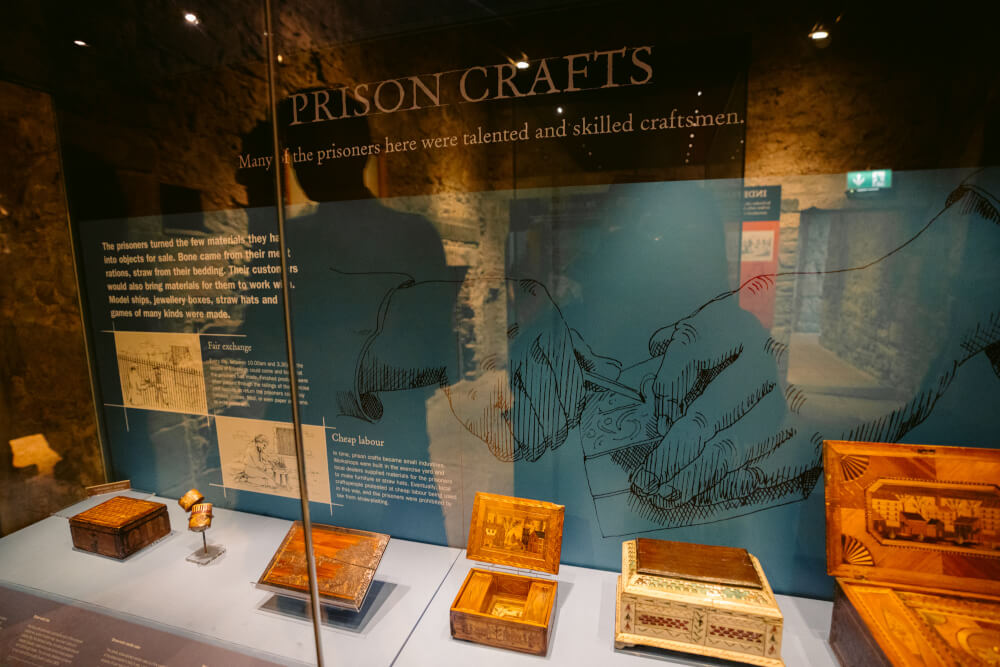
Royal Scots Dragoon Guards Regimental Museum
After the Prisons of War Exhibition, make your way over to the Royal Scots Dragoon Guards Regimental Museum housed in the New Barracks, which tells the story of the Royal Scots Dragoon Guards, AKA the senior Scottish regiment.
Inside, you’ll find uniforms, regalia, medals and more, a key highlight being a French Imperial Eagle captured during the Battle of Waterloo.
NOTE: These museums are run independently from the castle and so have different opening hours. Beware that they may close earlier than the rest of the castle, which was sadly the case during our visit. Are these museums worth it? I have no idea because I didn’t get to see the inside… but if you have an opinion, please let me know in the comments!
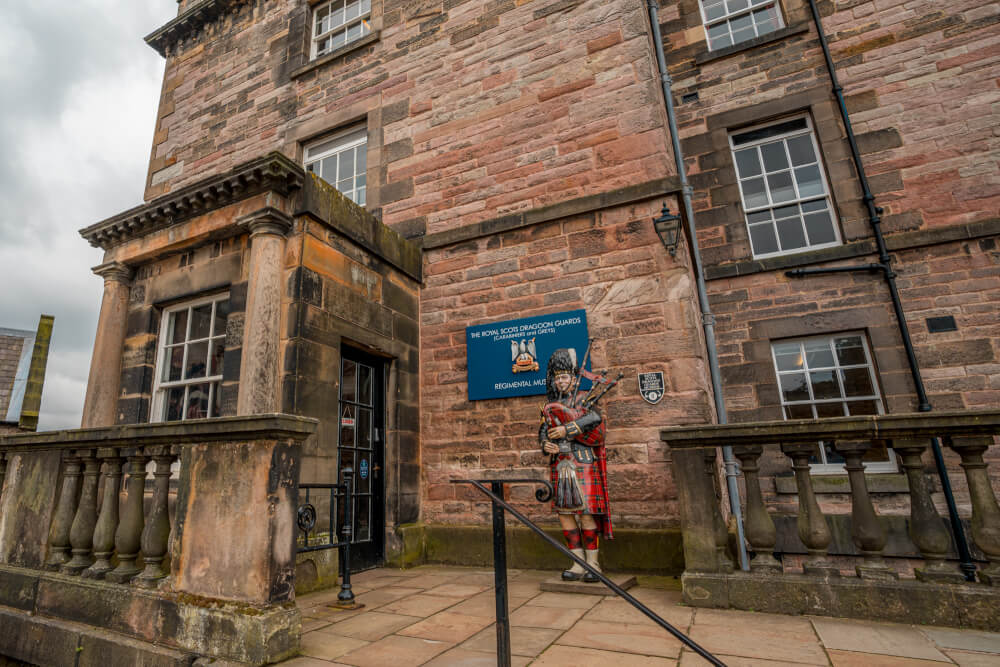
New Barracks
While you were technically already in the New Barracks during your visit to the Royal Scots Dragoon Guards Regimental Museum, they’re worth mentioning again since his seven story building is the largest one at Edinburgh Castle.
Constructed from 1796 – 1799, these barracks are able to hold a full battalion of 600+ soldiers… and they’re still in use today, which is why they’re not open to the public apart from the museum bit.
You can better admire their size in this photo:
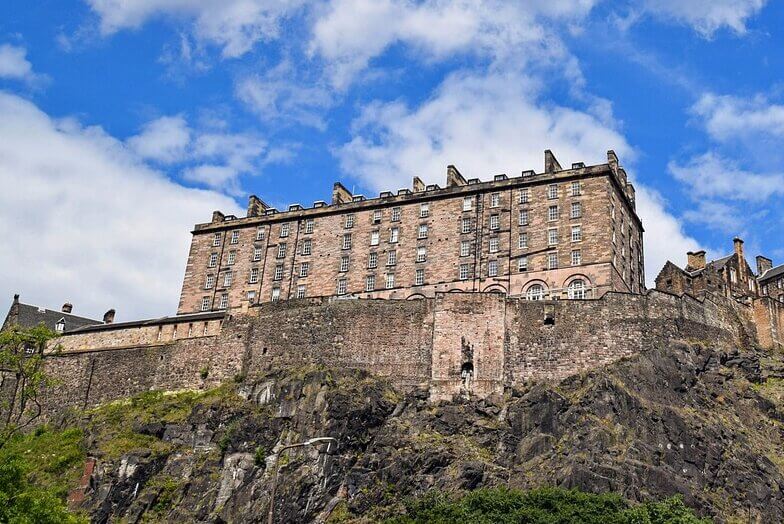
Museum of the Royal Scots and the Royal Regiment of Scotland
Opposite the New Barracks, you’ll find the Museum of the Royal Scots and the Royal Regiment of Scotland, which houses the Royal Scots / Royal Regiment of Scotland’s collections, including a number of shiny medals.
If you’re into military paraphernalia, you will definitely love this portion of your Edinburgh Castle itinerary.
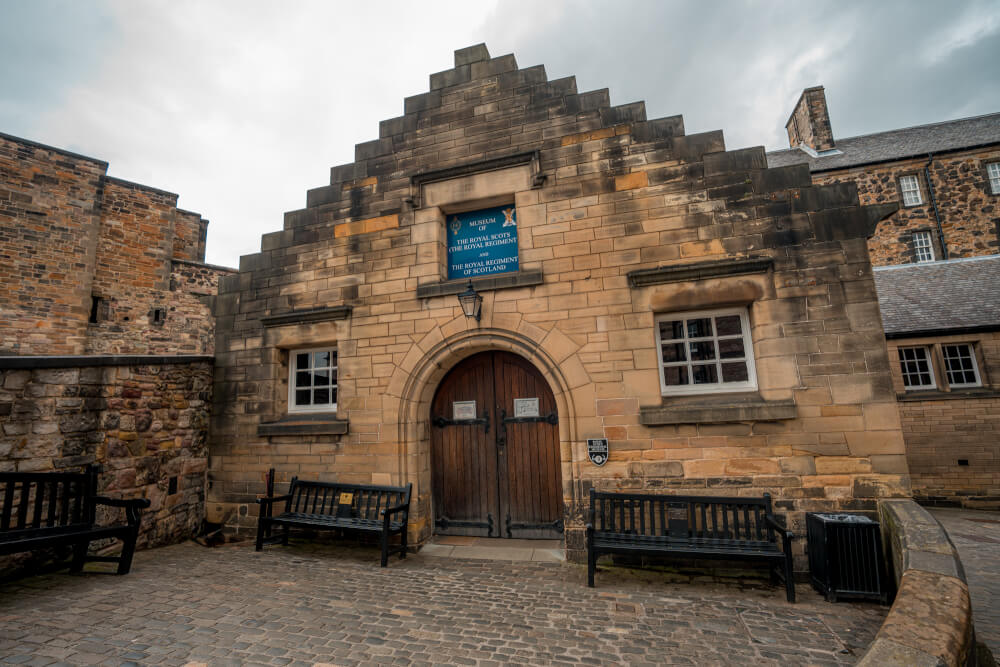
Governor’s House
Now, continuing downhill, you’ll soon find yourself at the Governor’s House.
Built in the mid 18th century, this (relatively) modern looking building is home to the castle’s governor, an honourary title given these days to the General Officer Commanding of Scottish Command.
This isn’t so much an Edinburgh Castle attraction you can visit, more a place to stand and wonder what you did wrong in a previous life to not be living in a place like that.
If you’re lucky like me, there will be men in VERY fancy tuxedos inside drinking champagne out of tiny flutes, adding further insult to injury.
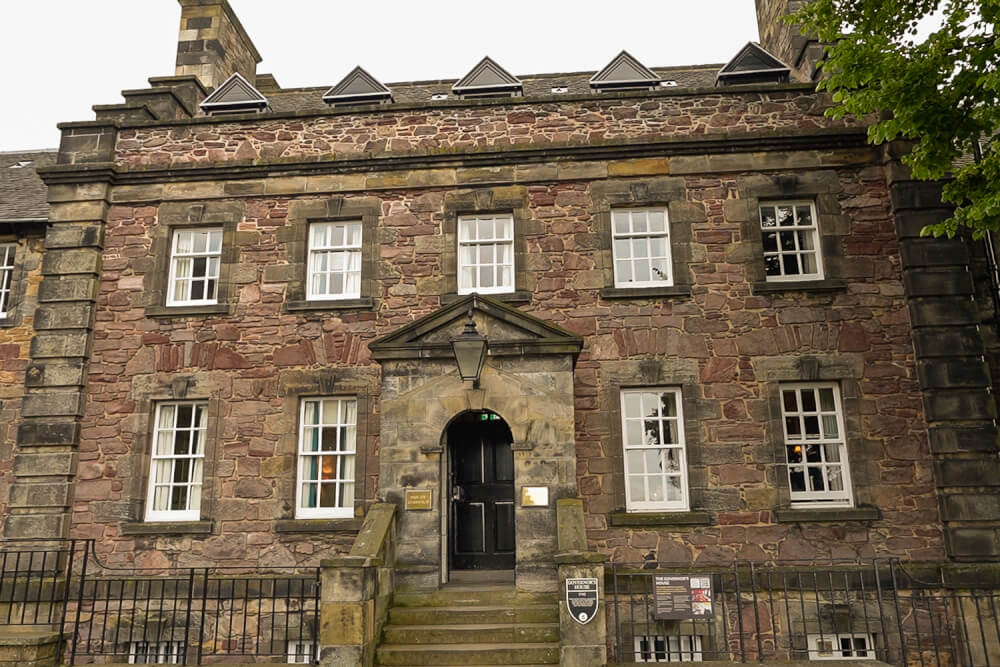
National War Museum
Alright, we have one final museum to tackle as part of our day at Edinburgh Castle, so let’s make it count!
Set in Hospital Square, the National War Museum is home to an extensive collection of items used by Scottish forces throughout the past 400 years of history, from epic historic weapons like Highland broadswords to more modern personal items belonging to Scottish soldiers.
This museum is a must for anyone interested in Scottish war history….. and anyone who fears disappointing me due to their lack of interest in Scottish war history.

Middle Ward (Again)
Alright, now with all the big sights out of the way, it’s time to finally take in some of the sights you skipped on your way in.
The Middle Ward is the largest open space at Edinburgh Castle, with lots to see, including the Argyle Battery, a six-gun battery that was originally built in the 1730s.
From here, you can also venture back up to Argyle Tower for the “Fight for the Castle Exhibition”, an immersive exhibition that deals with the Wars of Independence chapter of the castle’s history.
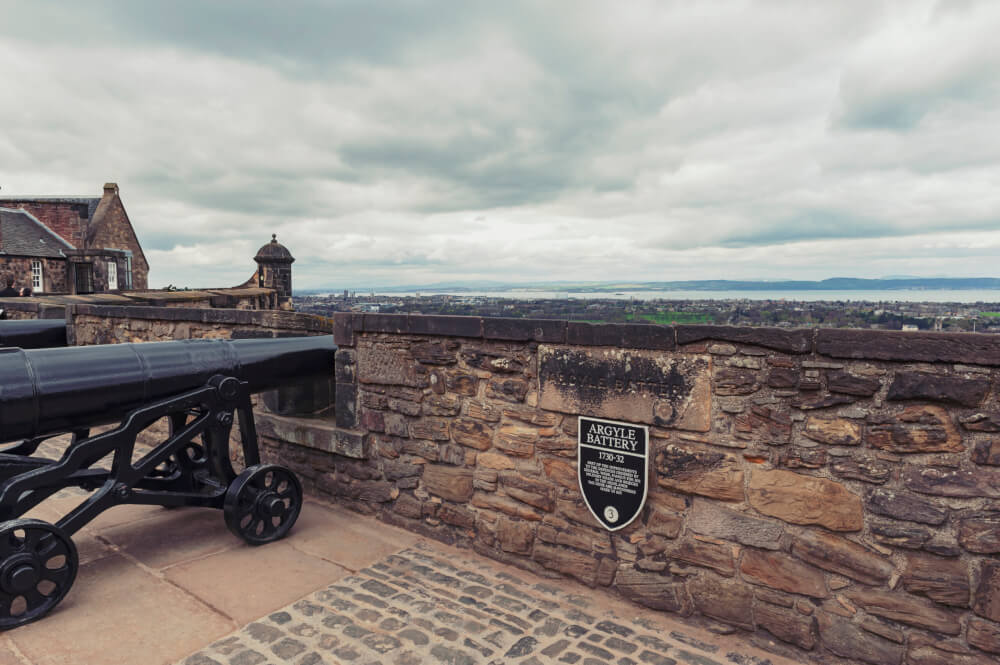
1pm: One O’ Clock Gun
If you’ve followed my initial recommendation of “3.5 hour minimum” closely, then I have great news: you can now cap off your visit with a bang!
… Literally.
Apart from deep fried pizza and Mars Bars, Edinburgh’s One o’ Clock Gun is one of the most consistent things in the city, firing every day at…. you guessed it, one o’ clock, since 1861.
This big bang takes place at Mills Mount Battery, on the right at the far end of the Argyle Battery. When in doubt, look for the lingering crowds.
Now, if you are too early, you can distract yourself with the Castle Timeline here, which showcases important moments from the castle’s history, including the fact that Sir Walter Scott of all people was the one who re-discovered the Honours of Scotland in a vault.
OR you could browse one of the many souvenir shops on-site, or grab a refreshment at one of the cafes (the Redcoat Café is very very close). Either way, the One o’ Clock Gun is the perfect way to wrap up your one day at Edinburgh Castle itinerary.
… Though for optimal nerd points, you may want to consider exploring and staying even after the gun has been fired!
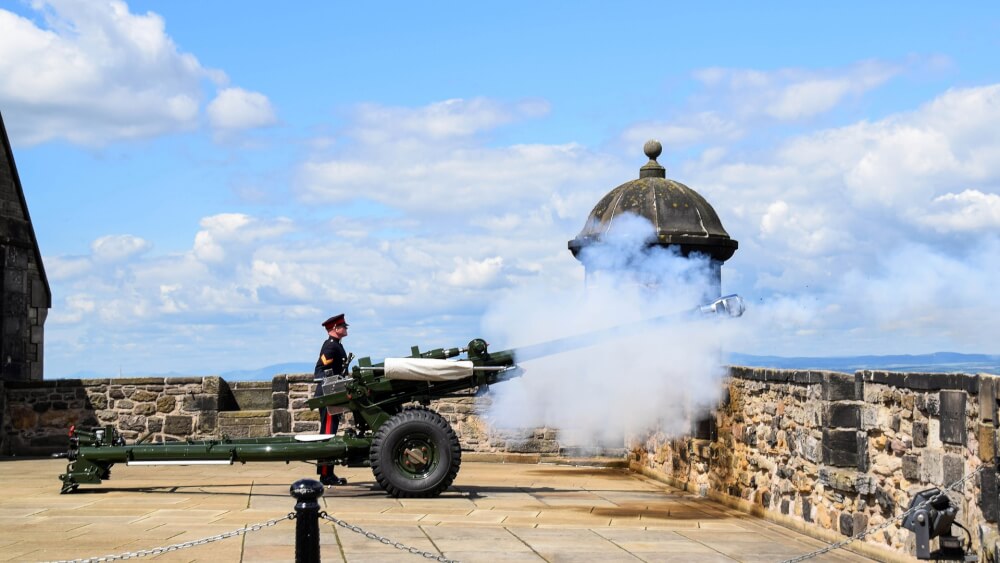
I Hope This Edinburgh Castle Itinerary & Plan Was Helpful!
Let me know in the comments if you have any more questions. Happy & safe travels!

